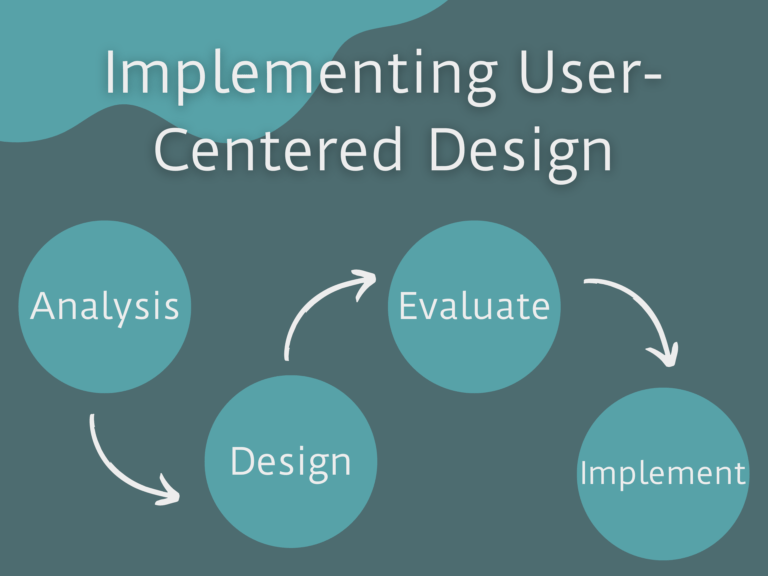The Benefits of Implementing User-Centered Design

by Nia Freeman
From the comfortable shape of Apple’s AirPods to the simplicity of designing on Canva’s website, user-centered design (UCD) can play a large role in the success of a product or business. According to an article published by The Good, UCD is an “iterative design process where you focus on your users’ needs.” This is how a business creates accessible products and experiences for its customers.
Thinking from the user’s perspective, when a product does not work, look and/or feel right, they are more likely to spend their money elsewhere. In this sense, the most successful businesses make sure their user experience (UX) feels intuitive and familiar, leaving little to no room for error. With great UCD, a business can expect to not only improve their users’ experience but also establish brand credibility and foster greater customer loyalty. Without UCD, it may be challenging for businesses to find and keep customers which can damage their reputation.
When creating a user-centric design concept, the process typically consists of four steps: 1) Analysis, 2) Design, 3) Evaluation, and 4) Implementation, often having multiple iterations before the end result. Throughout all steps of the design process, however, empathy should be the most important and consistent aspect.
Analysis
Being the first step in the design process, analysis is crucial to learning exactly what your customers need from you. Hearing the “pain points” of users, whether with your brand or within their personal lives, gives you insight into how your business can design a truly impactful product. Do your users have a lack of free time? Are they able to easily perform the tasks you ask of them? How can you make their lives as simple and accessible as possible? The questions you can ask are endless, but every one should come from a place of empathy and a desire to understand. Great resources for learning more about your target market may include website analytics, usability testing, interviews with customers, as well as surveys, reviews and testimonials.
Design
After you have completed your analysis, you can then move into the design phase of the UCD process. Here you should take into account all of the needs of your target market, creating a product with great usability and relevancy. When initially designing, it is best to fail quickly and cheaply, so as to not waste your time and money. Create cheap prototypes or wireframes in order to get the look and feel of your product without going over budget. It’s important to remember that UCD is an iterative process and you will more than likely have to make changes to your design before finalizing it.
Evaluation
During the evaluation phase, you begin testing your design for utmost usability. While it’s important to put yourself in the shoes of your user, you will gain the most insight from speaking directly with your target market. Through usability testing, surveys and interviews, you can get a better idea of how your product will be perceived. These methods are also crucial to finding out any blindspots or areas you may need to adjust. Does your product unintentionally make it harder to complete a task? Are your users confused about anything? Is there an intuitive flow to your product? Any issues that arise should be adjusted by going back to the first two steps of the design process, finetuning your analysis and design to better meet user needs.
Implementation
Once you are at a place where your users are satisfied, you can begin implementing your design. However, using UCD, there is no “final” product per se. As an iterative process, understanding and fulfilling your users’ needs is an ongoing activity that only ends when you no longer own the business. Therefore, implementation may lead you to further analyze, design, and evaluate down the line.
Through the UCD process, businesses can better ensure their products are reliable, relevant and usable. Customers like to feel heard and see the value in the products they’re purchasing, meaning they are more likely to shop with a brand that considers their needs. When you are ready to become the next Apple or Canva, implement user-centric design techniques into your business practices.
